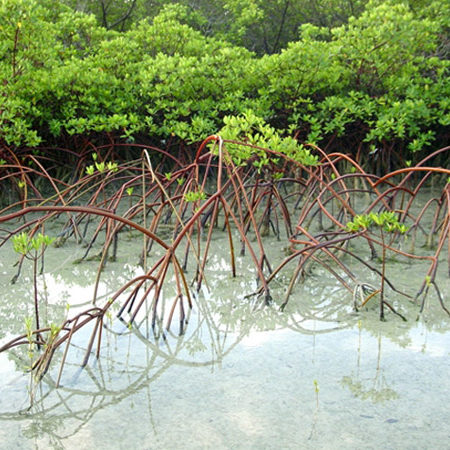Black Sound Cay Reserve
est. 1988
About
Established in 1988, this 2-acre park features mangrove patches around a small cay covered with coppice vegetation near Green Turtle Cay. It is an important habitat for waterfowl and other birds which winter in the region. Migratory birds that have been recorded feeding in and around the cay include Painted buntings, Indigo buntings, American redstarts, Black and White warblers, and Magnolia warblers.
Accessible by boat and land
BNT tour guides are available only by arrangement
PROTECTING MANGROVES.
Importance for Biodiversity
Mangrove Wetlands: Mangroves are important land builders as well as important nursery grounds for many fish especially groupers, crawfish and conch. There are four types of plants that are known collectively as mangrove: the Red Mangrove, the Black Mangrove, the White Mangrove and Buttonwood. Mangroves are also important dispersers of storm surges that come with tropical storm such as hurricanes.
Importance as a Habitat
Mangrove Wetlands also provide important habitat for many species of birds and waterfowl, especially our endangered ducks – the White Cheeked Pintail and the West Indian Whistling Duck.
For more information on mangrove ecosystems, see our fact sheet.

HISTORY
Saving wetlands in the midst of development
The development of Green Turtle Cay area caused local residents to be concerned for the environment and as a result, they promised to save all of the mangroves and native trees on their private properties. These residents came to this decision after recognizing that the mangroves and native trees on their private properties provided an important habitat for marine life of all kinds. On February 4, 1988, Mr. Alton Lowe wrote to then – President of the Trust, Mrs. Lynn P. Holowesko, regarding the probability of the Bahamas National Trust’s acquiring a small island in Black Sound Harbour at Green Turtle Cay. Mr. Lowe suggested that this are be protected by the Trust, because it was surrounded by mangroves and provided a rookery for many species of birds.
As a result of this plea, Mrs. Holowesko wrote to the Department of Lands and Surveys on April 17, 1988, requesting that this area be set aside, stating the major reasons for the Trust’s position. In a letter dated the 17 July, addressed to Mrs. Holowesko, the Trust was advised that approval had been granted for Black Sound Cay to be reserved as a National Park, and that a lease would be given to the Trust. On November 1, 1988, a ninety-nine year lease was signed between the Bahamas Government and the Bahamas National Trust. A new protected area was born.
Today, on Black Sound Cay National Reserve, vast quantities of mangrove vegetation are present and this Cay is the winter home to waterfowl and other avifauna.
COMING SOON:
Stories about Black Sound Cay Reserve



